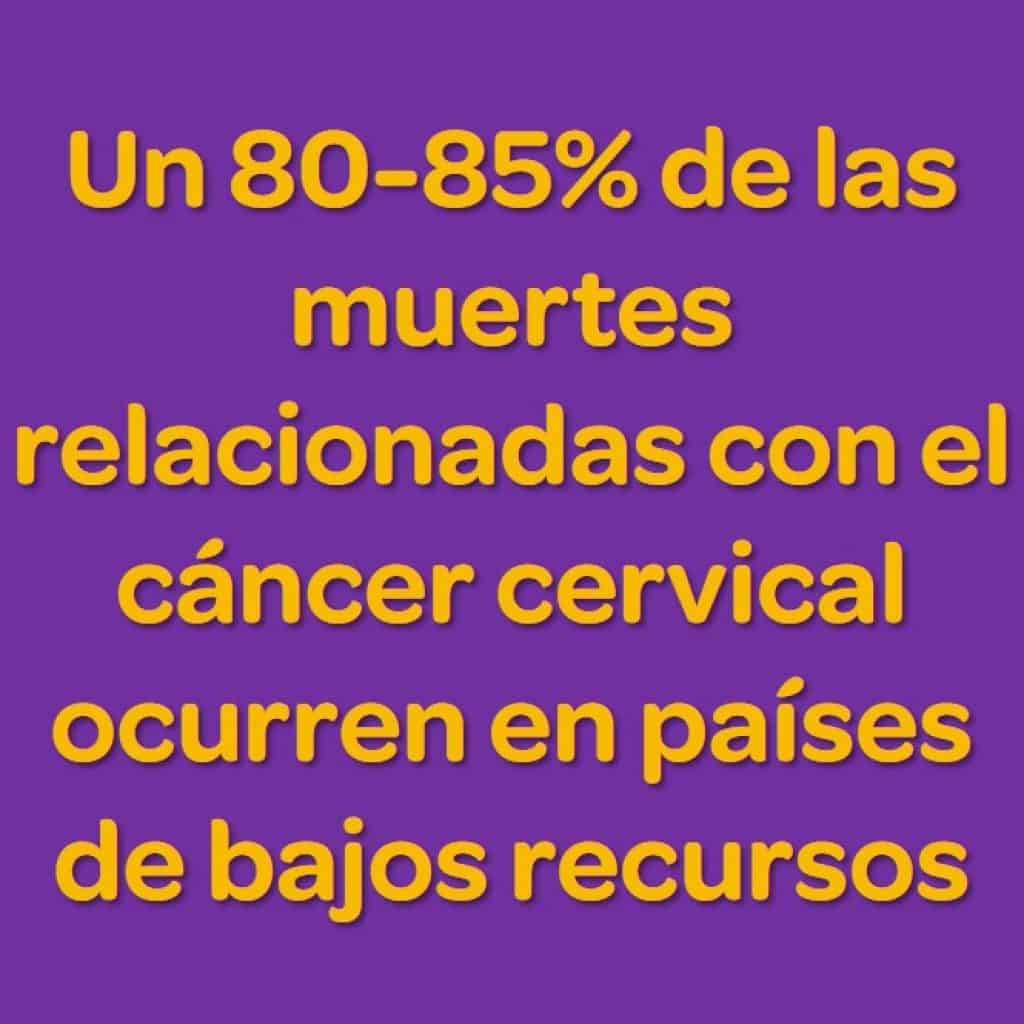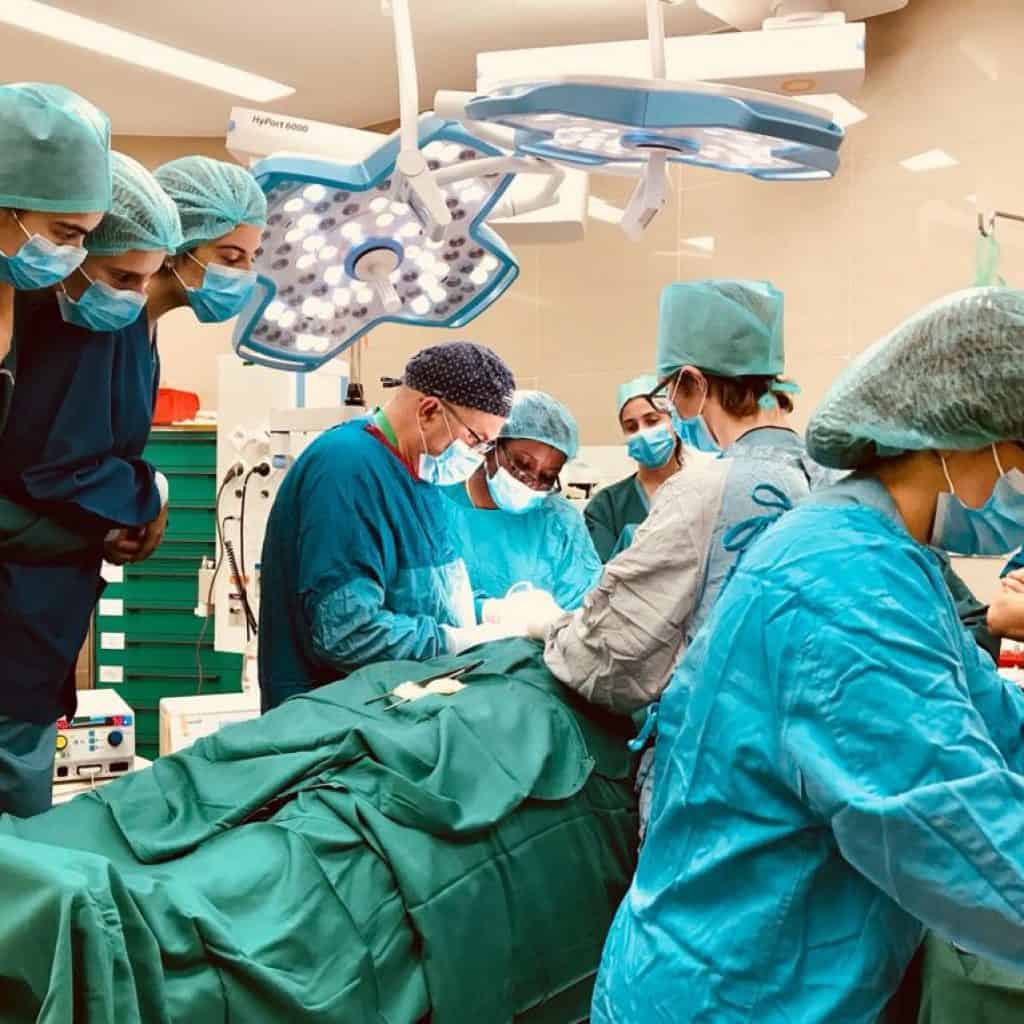Learn about our Cervix Cancer Screening Project
Objectives
Primary: Determine the feasibility and the effectiveness (sensitivity and specificity) of a system of screening of cancer of cervix sustainable based on VIA (visual inspection with acetic acid (via) designed to be applied in an area of very few resources in the periphery of Kinshasa (Democratic Republic of the Congo) and its treatment with cryotherapy.
Secondary:
- Know the rates of infection by the human papilloma virus (HPV), as well as the percentage of lesions cytological preneoplastic in these patients.
- To study the correlation between these findings and the serological status for the HIV virus.
- Take pictures of cervicografía using a mobile device and sent to Spain for evaluation.
- Show if the Test of Shiller with Lugol’s can improve the sensitivity of the VIA without increasing the costs
Background
Cervical cancer constitutesa major health problem throughout the world. It is responsible for 530,000 new cases of cancer and cause 270.000 deaths each year.
Up to 80-85% of the deaths related to cervical cancer occur in low-resource countries. In african women, is the second leading cause of cancer after breast cancer with an incidence rate of about 25 per 100,000 women per year. In sub-saharan Africa, the incidence is approximately 30-35 per 100,000 women/year, and here is the most frequent tumor among women. Due to reasons demographic is foreseeable that the burden of cervical cancer will continue to rise in Africa during the next few years.
Figures are for other countries:
By contrast, in countries such as the united States and Europe, the rate of incidence is 6 to 10 per 100,000 women per year. Also the number of cervical cancer deaths is almost ten times lower in high-income countries. The most important risk factor is infection by the human papilloma virus (HPV). It has found other factors that increase the risk of cancer of the cervix, possibly due to its relationship with the risk of HPV infection: the number of sexual partners, sexual activity early, parity, prolonged use of oral contraceptives, smoking, and HIV/AIDS.
Methodology of the Cervical Cancer Screening Project
Estudio de cohortes prospectivo en 500 mujeres (10-15 % HIV+) de between 25 to 65 years old, residents in Kinshasa, which come to the Centre Hospitalier Monkole and its 4 outpatient medical care or Advice and Diagnosis Voluntary HIV (CDV).
In the first place, we will inform the candidates the risk factors of transmission of the human papilloma virus and the characteristics of the study. After signing the informed consent patients will be part of a screening study based on the direct visualization of the cervix after application of acetic acid to 5 % and the application of a staining cervical Lugol’s (Test of Shiller).
The results of these tests in situ are compared with the results of the cytological study of cervical and detection of HPV, where the samples will be collected prior to the test screening to be evaluated in Spain.
After the administration of acetic acid and Lugol’s, and makethe assessment by the local researcher.
During the screening, take digital photographs of the cervix using a mobile device right. The images will be evaluated by two researchers in Spain.
DURATION: 24 MONTHS FROM THE 1ST OF JANUARY 2020
Budget: 8000€
Principal Investigator of the Cervix Cancer Screening Project.
- Luis Chiva: director of the Department of Gynecology of the University Clinic of Navarra (CUN). A Doctor of Medicine. Specialist in Gynecology and Obstetrics. Expert National and International Gynecologic Cancer. Assistant professor of the University of Texas. Professor Extraordinary of the University of Navarra. A member group of the european consensus for ovarian cancer, endometrial cancer, and a member of the Surgical Task Force of European gynecological tumors
Team in Spain
- Matías Jurado: Professor of Gynecology. Former director of the Department of Gynecology of CUN. A Doctor of Medicine. Specialist in Gynecology and Obstetrics. International expert in gyn oncology.
- Juan Carlos Muruzabal: Director of the Dept. of Gynecology of the Hospital Complex of Navarra. A Doctor of Medicine. Specialist in Gynecology and Obstetrics. Experto Nacional Cáncer Ginecológico. She has participated in multiple clinical guidelines national gynecological tumors and on the Board of Directors of the cancer Section gynaecology of the SEGO.
- María Dolores Lozano: Professor of Pathological Anatomy, Doctor of Medicine and Surgery by the University of Navarra. Director of the Department of Pathological Anatomy of CUN. Responsible for the Area of Cytopathology.
- Maria Aubá: Doctor of Medicine and Surgery, Faculty of Medicine of the University of Navarra in 2005. Currently medical specialist of Gynaecology in the CUN. Associate professor of Gynaecology of UNAV.
- Antonio Gonzalez: Specialist in Medical Oncology, Head of Oncology Service of the Hospital MD Anderson in Madrid. Teacher Responsible for the Subject of Oncology of the University Francisco of Vitoria. Recently appointed Co-director of the Department of Oncology of the University of Navarra. International expert in gynecological tumors.
TEAM IN KINSHASA
- Celine Tendoby: Director of Department of Gynecology at the Centre Hospitalier Monkole. Responsible for the Education of health and environmental of the municipality of Kindele (health zone of Mont-Ngafula), the outpatient service and the education program in primary health care in the health Centres of the Centre hospitalier Monkole, (Eliba in Mont-Ngafula, Kimbondo and Moluka in Selembao). Coordinator of the project “Pilot Center for the transmission of HIV-AIDS from mother to child in the Democratic Republic of the Congo” in the neighborhood of Kindele (health zone of Mont-Ngafula) and the project “Maternity without risk”, Centre hospitalier Monkole.
- Leon Tshilolo: Medical Director, Centre Hospitalier Monkole in Kinshasa, Democratic Republic of the Congo. It is also the Main Coordinator of the Centre of Training and Support for Health (centre of post-graduate training in Kinshasa). International expert in Clinical Research in sub-Saharan Africa










